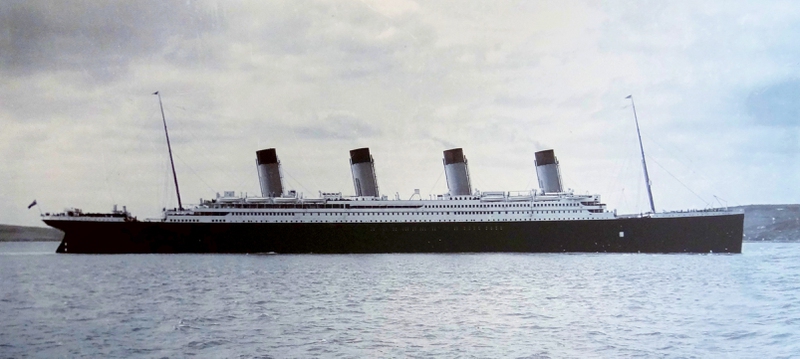Titanic is known for many aspects: its destruction on the first cruise, its construction techniques at that time, its film, etc. Below I list some other aspects of Titanic.

Part 1
Where was the Titanic built?
The Titanic was built in Belfast, north Ireland.
How Is the Titanic Designed?
Competition spawned the Titanic. In 1907, the White Star Line's rival, Cunard, launched the two fastest passenger ships then in service, the Mauritania and the Lusitania. That same year, the White Star Line's Chairman, J. Bruce Ismay, wanted to top Cunard, and he decided to do so based, not on speed but on size and luxury.
To design and build these new ships, dubbed the Olympic class, the White Star Line, turned to Harland & Wollf, its longtime shipbuilder. Naval architect Thomas Andrews, who later perished when the Titanic sank, headed up the design of the new vessels. Construction started on the first such vessel, dubbed the Olympic, in late 1908.
Designed to be the world's largest passenger steamship upon its completion, the Titanic was nearly 883 feet long and 104 feet high. Accommodations for first class passengers included palatial state rooms, some with their own promenades, along with a grand staircase, library, smoking room, squash court, sumptuous restaurants and other amenities. Second and Third Class accommodations, while far less posh, were still considered better than their counterparts on other ships.
The Titanic built to be Unsinkable?
While Harland & Wolff claimed that it never advertised the Titanic as unsinkable, a White Star Line brochure indeed said that the Titanic was designed not to sink. The media of the day, of course, seized on this idea of an unsinkable ship.
The primary design concept meant to make the Titanic unsinkable was a series of sixteen compartments separated by watertight bulkheads in the lower portion of the ship. Rather than, force passengers to use stairs to move between compartments, the ship's designers included doors between them. In case of emergency, those doors could be closed with the flip of a switch, sealing the compartments off from one another and theoretically keeping water confined to the breached compartments. Even if, two middle or four front compartments were breached, the theory ran, the ship would stay afloat. Unfortunately, the iceberg that sank the Titanic breached five compartments.
Changes in safety practices after the sinking of the rms titanic
After the Titanic sunk, there were changes made to the construction of ships. Safety regulations were also put into place so that inadequate lifeboats would never be a problem again. These safety rules and regulations are still used today.
The Titanic sinking has since been the topic of endless books, films, articles, and scholarly papers, and interest in the awful tragedy shows no signs of fading. The story of the Titanic will forever be the cautionary tale that no matter what advancements are made in technology, we remain forever vulnerable to the laws of nature.

View All Comments /Add Comment